How Much Does Your State Spend On Welfare Programs?
It’s pretty difficult to find an accurate number as to how much we spend on welfare programs in America. According to the Census Bureau it was $637 billion in 2016. And according to this article which sources usgovernmentspending.com information it was $738 billion in 2018.
There are six major welfare programs in the United States at the Federal level. They are:
- Supplemental Nutrition Assistance Programs (SNAP)
- Medicaid
- Temporary Assistance for Needy Families
- Earned Income Tax Credit
- Supplemental Security Income
- Housing Assistance
I found some data on these programs by state and fired up my magic mapping machine, so let’s dive in. (Note: All maps are clickable for a larger version)
This first map shows the total welfare expenditures by state from the 2016 Census Bureau data. That was the most recent I could find which included all welfare types divided out by state.
As always I do this stuff to seek out geographic patterns. In this case the midwest/grain belt and the Southeast show lower welfare distributions, while the Northeast and parts of Appalachia are higher, with another high cluster in the upper mid-west.
The five states that spend the lowest on welfare per capita are:
- Georgia – $1,102
- Utah – $1,123
- Florida – $1,243
- South Dakota – $1,247
- Texas – $1,263
The five states that spend the highest on welfare per capita are:
- New York – $3,372
- Alaska – $2,983
- Massachusetts – $2,883
- Vermont – $2,874
- Minnesota $2,780
SNAP
Let’s look at SNAP, or the Supplemental Nutrition Assistance Programs. SNAP is what was referred to as “food stamps” in the old days. I found some good recent data on SNAP participants as of May 2019 and normalized the numbers by state population.
Here’s what it looks like:
Patterns that appear: The southeast is particularly reliant on SNAP and the western plains states into the Rockies and up to Idaho are not.
The five states with the lowest percentage of citizens on SNAP are:
- Wyoming – 4.31%
- Utah – 5.15%
- New Hampshire – 5.42%
- North Dakota – 6.32%
- Kansas – 6.81%
The five states with the highest percentage of citizens on SNAP are:
- New Mexico – 21.49%
- Louisiana – 17.14%
- West Virginia – 17.04%
- Mississippi – 14.85%
- Alabama – 14.73%
If you really want to geek out on SNAP by geography, usafacts.org has a great interactive map showing recipients by county as well as changes over time.
Medicaid
Medicaid is a federal and state program that provides health care benefits to low income individuals who meet certain eligibility requirements. To receive Medicaid benefits you generally must have a low income but you must also meet a covered group, meaning you must fall into an approved category for coverage (i.e. pregnant women, low income senior, etc).
I pulled data from the Medicaid website about the number of people enrolled in Medicaid in each state. These numbers include both Medicaid and CHIP. CHIP stands for the Children’s Health Insurance Programs and is an insurance program that provides low-cost health coverage to children in families that earn too much money to qualify for Medicaid but not enough to buy private insurance.
Here’s the map:
The main geographic pattern that stands out to me is the very consistent numbers in the grain bet, namely Kansas, Nebraska, South Dakota, and North Dakota. And another homogeneous area of consistent values in the upper midwest and Great Lakes area. I’m also surprised at the low number for Florida considering the age of the states’ population.
The five states with the lowest percentage of citizens enrolled in Medicaid are:
- Wyoming – 9.22%
- Utah – 9.55%
- North Dakota – 11.78%
- South Dakota – 12.44%
- Nebraska – 12.55%
The five states with the highest percentage of citizens enrolled in Medicaid are:
- Washington D.C. – 39.89%
- New Mexico – 35.04%
- New York – 33.31%
- Louisiana – 30.04%
- Alaska – 29.88%
Notice that Utah, Wyoming, and North Dakota are in the lowest three again.
Medicaid expansion is a provision in the ACA which expands Medicaid eligibility to cover more low income Americans. Specifically, it extends Medicaid coverage to those making up to 138 percent of the federal poverty level ($16,753 a year for an individual or $34,638 for a family of four).
Here is a map showing the states that have and have not extended Medicaid benefits as of November 2018:
Of note, Nebraska has adopted Medicaid expansion but not yet implemented it.
Temporary Assistance For Needy Families (TANF)
The Temporary Assistance for Needy Families (TANF) program provides grant funds to states to provide families with financial assistance and related support services. To qualify for this benefit program the applicant must be either pregnant or responsible for a child under 19 years of age.
I found some mapped data for the TNAF program, so no need to reinvent the wheel:
Earned Income Tax Credit
The Earned Income Tax Credit, EITC or EIC, is a benefit for working people with low to moderate income. To qualify, you must meet certain requirements and file a tax return, even if you do not owe any tax or are not required to file. EITC reduces the amount of tax you owe and may give you a refund.
There are two main types of EITCs, refundable and non refundable. Both refundable and nonrefundable credits get subtracted from a qualified taxpayers taxes. If a refundable credit exceeds the amount the taxpayer owes, the difference is paid as a refund. If a nonrefundable credit exceeds the amount the taxpayer owes, the excess is lost.
Here’s a map of states that have refundable or nonrefundable EITCs, or no EITC at all.
Supplemental Security Income
Supplemental Security Income is a United States federal welfare program that provides cash assistance to individuals who are either aged 65 or older, blind, or disabled. SSI was created by the Social Security Amendments of 1972, but is funded by general tax revenues (not Social Security taxes).
I found some great data from the Social Security Administration on the SSI program by state, but it was not mapped. So of course I remedied that situation with my magical psychedelic mapping machine:
The obvious big pattern is the large area in the upper midwest extending to the Rocky Mountain states that has relatively lower percentages of people receiving SSI. Also the higher percentage band that goes through Appalachia and into the deep South.
The five states with the lowest percentage of citizens receiving SSI are:
- Utah – 0.98%
- North Dakota – 1.10%
- Wyoming – 1.19%
- Colorado – 1.28%
- New Hampshire – 1.37%
The five states with the highest percentage of citizens receiving SSI are:
- Washington D.C. – 4.07%
- West Virginia – 4.00%
- Mississippi – 3.92%
- Kentucky – 3.90%
- Louisiana – 3.76%
Housing Assistance
Section 8 of the Housing Act of 1937, often called Section 8, authorizes the payment of rental housing assistance to private landlords on behalf of low income households. Approximately 5.2 million American Households received rental assistance in 2018, and of those approximately 1.2 million received a Section 8 based voucher.
I was able to find data detailing the number of HUD-subsidized units available in each state. Again, it was not mapped. Again, yeah, you know…
I didn’t want to show just the number of total units, since of course a populous state like California will have way more than say Wyoming and the resulting numbers wouldn’t mean much. But I also couldn’t divide the number of units by total people since everyone does not need a house and the resulting numbers would be very small.
I decided to normalize the data by how many units are available per 100 people in each state. My blog, my rules 🙂 It could be done other ways. This at least gives you an idea of the availability of subsidized units as compared to each sates respective population.
The main pattern I see here is the entire east part of the country has a higher number per person than the west in general.
The five states with the lowest number of HUD-subsidized units per 100 people are:
- Arizona – 0.56
- Utah – 0.59
- Idaho – 0.71
- Nevada – 0.77
- Florida – 0.91
The five states with the highest number of HUD-subsidized units per 100 people are:
- Washington D.C. – 5.44
- Rhode Island – 3.59
- New York – 3.05
- Massachusetts – 2.84
- Connecticut – 2.34
Conclusion
Wow, if you made it this far you’re either a map nerd or you’re really interested in our public welfare systems, or both. So that’s the six major welfare programs in America and some geographic data about each.
I’ve done lots of other geographic-based posts showing various aspects of money and finance from a location perspective. Be sure to check out my Geoarbitrage Resources Page that has tons of great tools to help you find your perfect location.
I hope you find these resources handy and I will continue to expose valuable tools that can help when deciding on a geoarbitrage strategy.
Your turn – I love comments and I’d love to hear from both map nerds and normal, well-grounded people, so chime in below!
















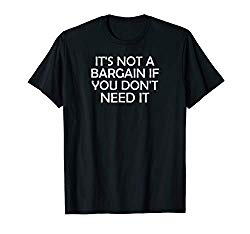
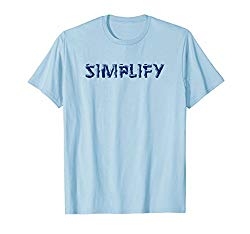









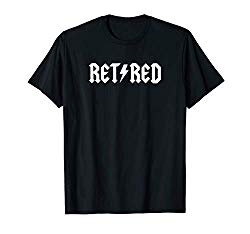







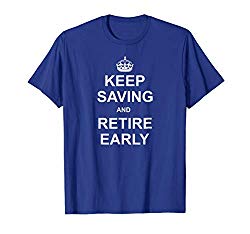


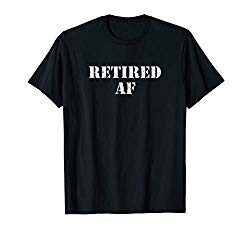











Very insightful, thanks for sharing! I’m curious about the impact that your general election may have this year 🙂
Presidents don’t set policy, Congress does, so those changes are more important in general. That’s the limit of politics that shall be discussed 🙂
Thanks for stopping by and the kudos, I appreciate it!
Interesting stuff Dave. I’m surprised my home state of Maryland doesn’t spend more per capita, given their high total tax burden and fiscal liberalism. I moved away, in part due to high taxes and high cost of living, and it turns out I’m not alone. We recently ran an analysis of total tax burden by state and how it correlates to migration within the US, and there’s a strong correlation.
Anyway, always a fascinating read around here!
I was kinda too but remember these are the 6 federal welfare programs. Maryland is a huge tax and spend state and has lots of state level programs. When I moved from Maryland to Virginia my taxes went down immensely, it was HUGE!
Hi! This is fascinating, and it’s surprising (or is it?) that the govt. hasn’t mapped this already for public consumption, or have data more recent than 2016.
I like how you broke it all out by program, as one thing I’d be interested to see is the first map (welfare per capita) broken out by % as well (what % of the population is receiving 1 welfare benefit, 2 benefits, 3 benefits, etc). Then each progressive level could be color coded. Some individuals/families may get just a couple benefits while others get the full stack.
I know this was a Federal overview, but seeing a map of each state’s income tax would also be a good data point. Hard to do property taxes as they’re so varied by municipality.
I wonder if there’s also a way to calculate a rough average of charitable spending on welfare from private sources by state? Then you’d see an overall welfare spend, and how much of it is coming from private citizens/organizations.
Thanks for doing this work and sharing it – I know several people who’ll be as interested as I was, and will pass it to them today. I moved from a high welfare to low welfare state recently without realizing it, but I sure did realize that my tax burden was significantly reduced. I don’t mind helping people who need it whatsoever, but my old state’s taxes had become so burdensome that it was time to go.
Wow, lots of stuff 🙂 The data I found didn’t list total welfare by population percent, only per capita. I can’t do simple division by population because I’d need to know the number of folks receiving the benefits, and I couldn’t find data for that relating to Section 8 and the EIC.
I think there are some good state income tax maps online but complex brackets make mapping that hard. As for charitable spending by state, not sure of that one. I’m also not sure how accurate it’d be as IRS approved charities would likely have good data but those that are not deductible would probably not, so you likely wouldn’t be getting the whole picture.
Glad you liked the post – as you can see these things are hard and get complex, mainly because of the availability or pedigree of the source data. I don’t want to use crap data, so I sometimes find stuff that looks bad, and I pass.
The high % of participants in medicaid in D.C. has me curious whether their program is more liberal than other areas or if it is mostly a cost of living thing. Does their program adjust from federal cost of living since D.C. is an expensive place to live?
Does the grain belt do the opposite?
It seems there is some correlation with poverty and some correlation with liberal policies.
One thing I am interested in is how any of this correlates to net migration of the state. Is high % on medicare an indicator of young people moving away?
How has this changed over time?
With D.C. it’s mostly the simple fact that it’s a city and all-urban, and not a state. I simply list it because the sources treat it as a state. While D.C. is a pretty wealthy city, there are still plenty of very poor areas, especially in the Southeast section. And yes D.C. like the majority of large urban areas has liberal policies.
Interesting that you bring up migration, I’m currently working a post on that, but not correlated to this. The data for migration is all over the place and far more “guestimate” than these data. Also if you try to match migration to welfare or taxes you’d have a big correlation/causation problem. You wouldn’t be able to say why folks moved and if it matched that reason.
Thanks for the great comment!
it’s always good to confirm what i thought i knew: we’re getting robbed in ny state.
New York is always a special gem isn’t it 🙂
I am of the personal belief that the wealthiest countries (this means more than money) spend the most on those who need it. I would hope your country finally breaks through the hurdle to truly care for all its citizens via healthcare for all. I feel it is for the common good that we equally tax and distribute that tax for the good of the whole. Yes, there can be some wasteful bureaucracy in any government system but the majority of those taxes do good for systems that help the residents and lift the country up as a whole.
As for the differences in those regions on the map, I would suspect comes a lot down to job market, types of industry, diversity in demographics and political leanings.
The U.S. has been at the top of the list as the world’s most generous country for charitable giving for a long time now, which makes me proud. And much of the geographic differences are either related to relative income/wealth, or local policies from a broad perspective.
Charitable is not the same as Government supported. I do agree that the citizens are well know for both giving and philanthropy which is awesome.
Agreed Chris and I wasn’t equating them, my point was that the US is often looked at as having less than desirable government run social support programs, but they’re forgetting that we have the worlds most charitable people who give the most. Our non-governmental support programs are massive, and far reaching.
I was half way through the maps when I realized all the headings stated “percentage of CITIZENS”. Have you taken (or the census) taken into account the illegals who use the welfare system? Accordingly, the illegal adults aren’t supposed to get SNAP or other welfare give aways, it’s their “children” that are supposed to be the recipients (but we all know better) even though they are also illegal. So when the census titles something “percentage of citizens” am I to assume that they are not counting the illegals who get the free welfare programs? Because this would drastically change the percentage of usage, especially here in California. Just asking.
The number of persons in the country illegally is not known to any degree of accuracy. Any website that claims to portray numbers is basically guessing, it’s purely speculative. So any attempt to do that would be numerically meaningless.
This is really interesting Dave. It’ll take me awhile to digest all of the info! I’m still scrolling up and down comparing various maps! Seriously interesting!
Glad you like it, digest away. Thanks!
Great work. That’s a lot of people on Medicaid. I thought it would be lower.
I think it’s a good thing, though. Healthy people can contribute to the economy. Sick people cost the system even more.
I was also surprised by the large numbers on Medicaid, had no idea. I also agree, with your statement. Thanks as always Joe!
Nice gathering and displaying of the data. I can’t possibly make a comment without potential politics, so this post is over.
Ha! Thanks for being a regular reader and for knowing my policy on politics. I knew I was entering dangerous territory with this one but it doesn’t have to go political per se. Cheers!
Nice work. The Medicaid % for my state lines up pretty well with the Medicaid payer mix at the hospital system I work with.
Wow, New York and New Mexico are up there!
Take care,
Max
New York tends to be high in everything, thanks for stopping by Max!
Interesting stuff Dave! Love the data and your analysis! Keep it coming!
Thanks Tako!
Very interesting read Dave. Great job with the info-graphics too. My home state (Maryland) actually isn’t as bad as I thought on most of these. We’re pretty high, but good to see we aren’t topping the charts (thanks New York!)
I expected Maryland to have higher values as well, but they do have strong state-level welfare programs
I assumed that California would be among the top 5 highest in more than one of those categories. But I guess my assumptions was false!
Some of my assumptions were negated as well after doing these maps